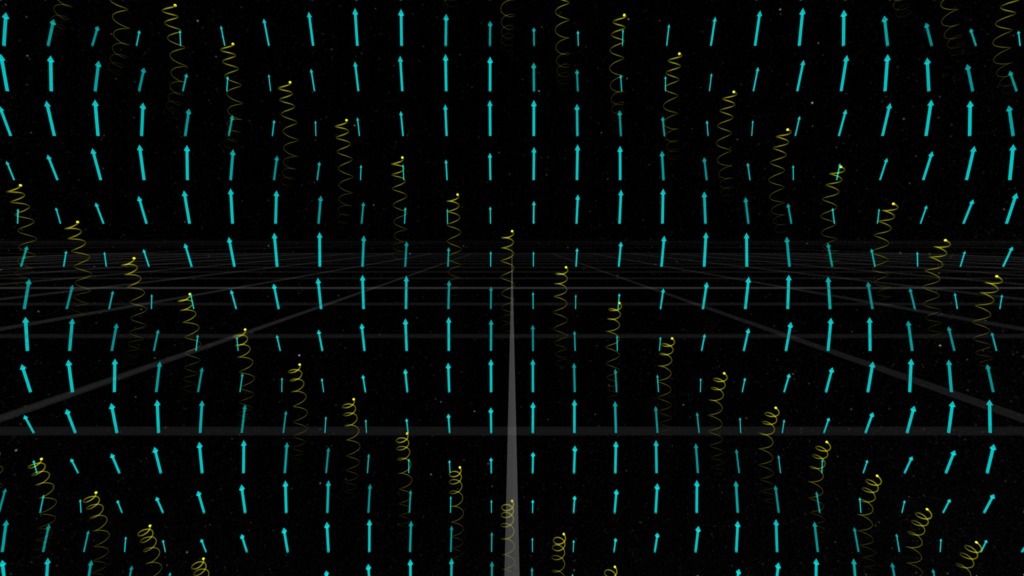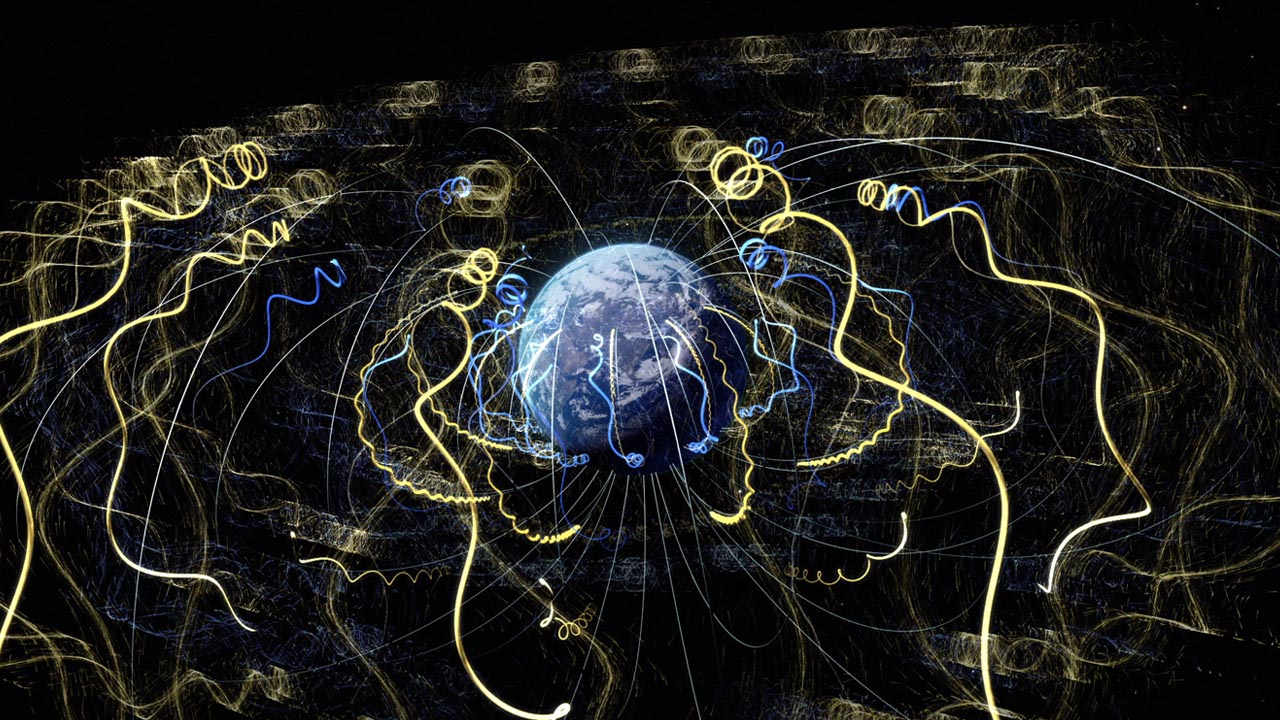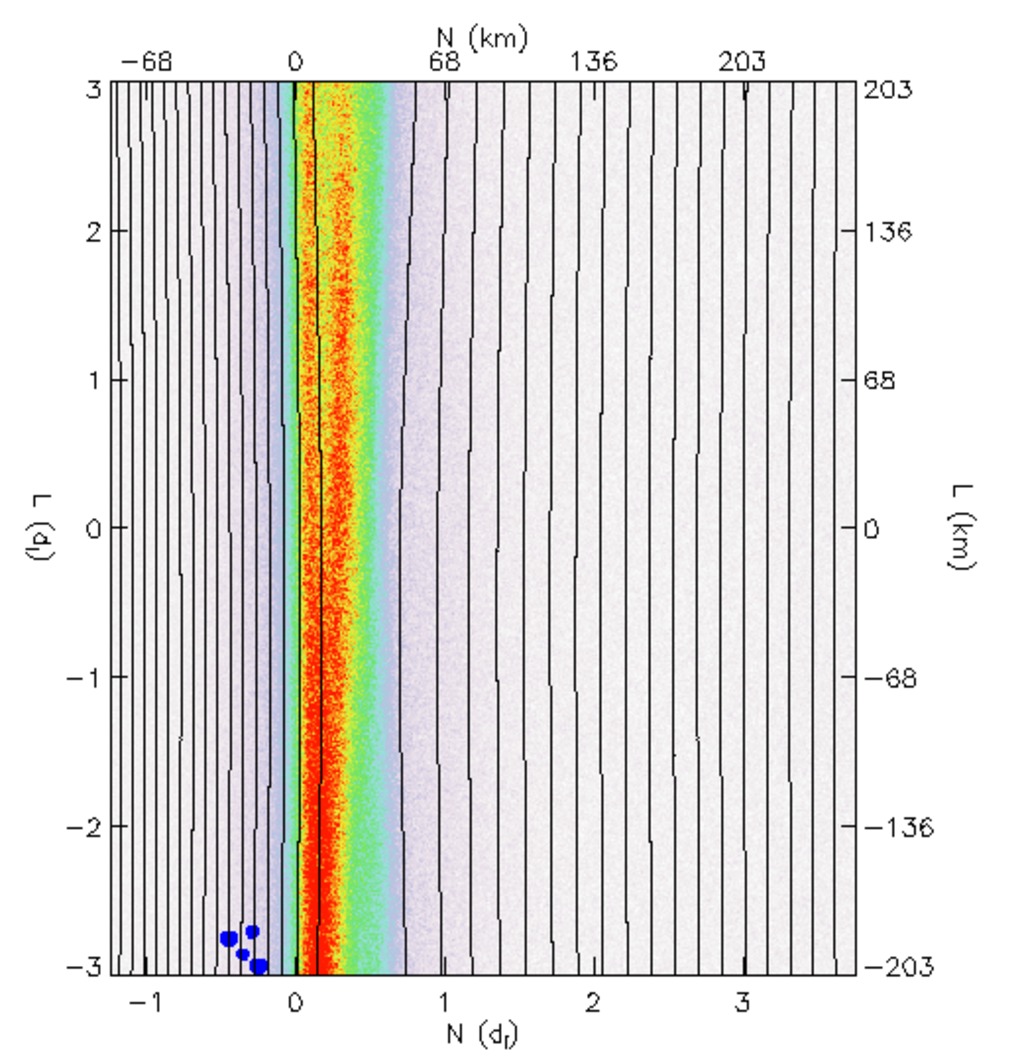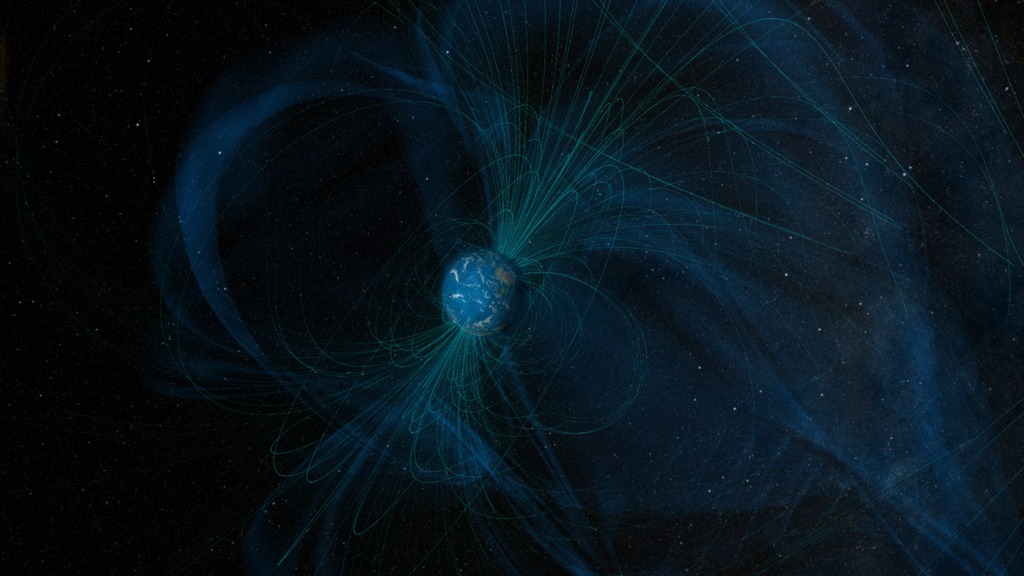Earth's Magnetism In Action

Scientists make a breakthrough in observing the dynamic magnetic system surrounding our planet.
The environment around Earth overflows with energy and a complex system of magnetic fields that trap electrons and other charged particles. When these fields collide and realign—a process called magnetic reconnection—it can be hugely explosive, sending particles hurtling off at near the speed of light. Magnetic reconnection powers a wide variety of events in space, from giant explosions on the sun to auroras in the night sky. But until recently, we have never been able to witness this phenomenon directly. That all changed on October 16, 2015, when four spacecraft of NASA’s MMS mission made the first observations of a magnetic reconnection event while orbiting our planet. The data collected by the spacecraft allowed scientists to track better than ever before how the magnetic fields changed, as well as the speeds and direction of the various charged particles. The findings will help protect spacecraft and astronauts from the potential damages of space travel. Watch the video to learn more.
Explore how magnetic reconnection works and what scientists have learned from spacecraft observations in this video.

Magnetic reconnection occurs when Earth's magnetic field lines (shown above) suddenly come together and realign.

NASA's MMS spacecraft orbit Earth, crossing the boundaries of its magnetic field in search of magnetic reconnection events.

The spacecraft detected a big event in October 2015. The rearranging of magnetic field lines caused a swift release of particles and energy.
For More Information
See NASA.gov
Credits
Please give credit for this item to:
NASA's Goddard Space Flight Center
-
Producer
- Genna Duberstein (USRA)
-
Video editor
- Genna Duberstein (USRA)
-
Animators
- Walt Feimer (HTSI)
- Brian Monroe (USRA)
- Tom Bridgman (Global Science and Technology, Inc.)
-
Scientists
- Paul Cassak (West Virginia University)
- Jim Burch (SwRI)
-
Writer
- Karen Fox (ADNET Systems, Inc.)
Release date
This page was originally published on Tuesday, May 24, 2016.
This page was last updated on Wednesday, May 3, 2023 at 1:48 PM EDT.



